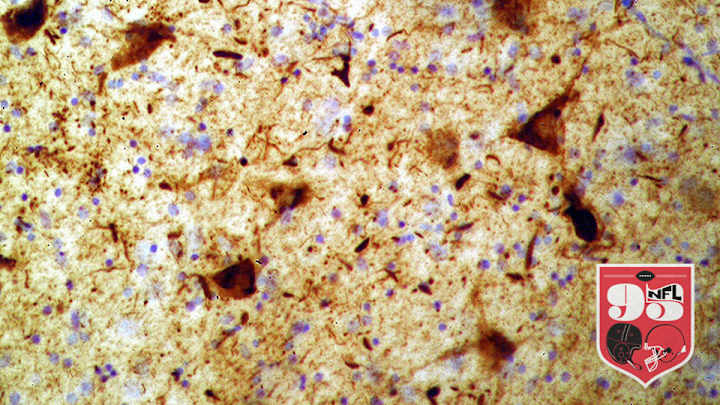Tau Protein

The MMQB presents NFL 95, a special project running through mid-July detailing 95 artifacts that tell the story of the NFL, as the league prepares to enter its 95th season. See the entire series here.
It’s not something the naked eye can see, and until recently it wasn’t detectable outside an autopsy room. Frankly, few of us know much about it. But the more scientists learn and tell us about the abnormal protein called tau—which can build up to cause Chronic Traumatic Encephalopathy (CTE), a deterioration of the brain—the more we realize that although microscopic, it could be one of the most important factors in the future of football.
Scientists at Boston University, notably Dr. Ann McKee, have been at the forefront of research into the relationship between CTE and sports. Their 2009 paper presented evidence of Tau's role in reducing neurological and cognitive function in football players and other athletes who suffer repetitive brain trauma. McKee's team studied the brains of deceased former athletes who suffered cognitive impairment and discovered significant tau buildup in a majority of them.
Three brains studied by the Boston University researchers: On the left, a 65-year-old control subject showing no signs of CTE. In the center, the brain of NFL linebacker John Grimsley, who died in 2008 at age 45. The brown areas indicate the presence of tau. On the right, a boxer who had suffered sever dementia shows the highest prevalence of tau. (Boston University)
Among the deceased players whose brains have been shown to have signs of CTE are Hall of Famers Mike Webster and Junior Seau, and living players including Tony Dorsett and Joe DeLamielleure have been diagnosed as having the condition. CTE has been linked to memory loss, depression, and eventually, progressive dementia. As scientists explore these connections delve into ways we can identify, treatand, ideally, prevent CTE, the football world must readjust long-embedded attitudes towards head injuries. Will truths about tau tell certain individuals they cannot play the sport? Will we see changes with rules, equipment and medical policies—and to what extent? It’s daunting to imagine what a future NFL landscape might look like—it’s not something most of us can visualize, at least not yet.
—Emily Kaplan
